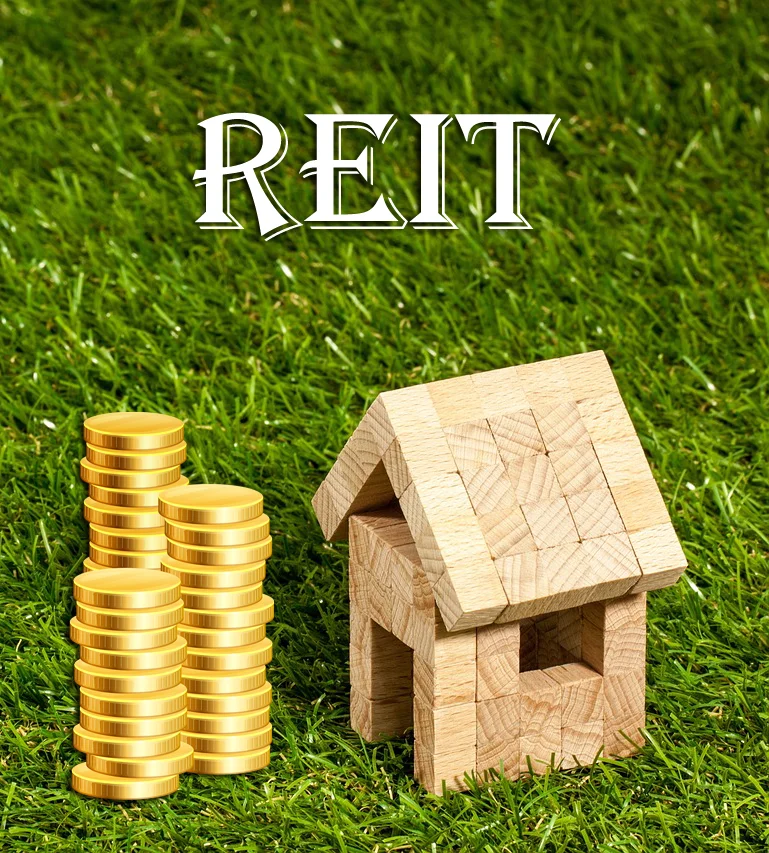Navigating the complex global of real property investment opportunities can be both exciting and daunting. Many potential buyers grapple with the quandary of locating homes that promise high returns even as minimizing risks.
In this article, we resolve the mysteries surrounding real property investment by means of delving into top properties that offer a perfect mixture of enormous returns and risks.
1. Multifamily Properties

Multifamily houses in the USA generate excessive returns through multiple condo streams, ensuring a steady earnings glide. Additionally, economies of scale frequently cause lower costs consistent with units, maximizing profitability.
Average Return on Investment
According to S&P500, Residential properties yield an average yearly profit of 10.6%.
“Multifamily residences normally yield better returns on funding in comparison to unmarried-own-family houses. Most millionaires I know make more money from owning real estate than any other investment. Real estate consistently increases in value over time and outperforms other investments.”
-Peter Hernandez, President of Elliman
Investors gain from rental profits, belongings appreciation, and tax advantages, resulting in an attractive standard ROI.
Tax-related benefits
Investors in multifamily properties can enjoy diverse tax incentives, including deductions for mortgage hobby, belongings depreciation, and working charges. These benefits significantly beautify universal profitability.
Pros
- Multiple tenants in the USA suggest a strong condo income, decreasing the effect of vacancies.
- Spread investment threat across a couple of devices and reduce loss.
- Multifamily residences are regularly recognized quicker due to the potential for profits.
Cons
- Handling more than one unit requires efficient asset management, which is time-consuming.
- Acquiring multifamily residences in America requires large upfront capital.
- Multifamily homes are prompted by means of economic fluctuations.
Pro Tip – Invest in well-maintained, centrally placed multifamily properties with robust potential for condo demand. Conduct thorough market studies and economic analysis to make sure the property aligns with your investment dreams, presenting a balance between high returns and manageable risks.
2. Commercial Real Estate

Investing in commercial real estate in the United States offers a robust avenue for high returns and lengthy-term balance.
Average Return on Investment
The average Return on Investment (ROI) in commercial properties average 9.5% annually (according to S&P 500), which tends to be substantially better in comparison to residential houses,.
Additionally, there are appealing tax-related benefits, which include depreciation deductions and deductions on mortgage hobby payments, that can enhance standard profitability.
Pros
- Commercial properties offer constant and predictable profits.
- Commercial homes can comprehend over time.
- Investors can leverage tax benefits, including deductions on belongings-related expenses, to reduce tax liabilities and multiply profitability.
Cons
- Commercial houses often require full-size preliminary investment, making it hard for small-scale investors.
- Vacancies in industrial residences can result in earnings interruptions.
- Commercial actual property values are sensitive to economic fluctuations.
Pro Tip – Diversify your industrial real estate portfolio across exceptional sectors (office spaces, retail, commercial) and locations to unfold the risk and decorate the capability for better general returns.
3. Fix and Flip Properties

Fix and flip properties in America are lucrative ventures for actual property traders in search of high returns. By shopping undervalued properties, renovating them, and promoting them at a higher rate, buyers can make enormous earnings.
Average ROI
The average ROI for fix and flip properties in the United States varied from 20% to 50%, making it an attractive preference.
Moreover, buyers can experience tax-associated benefits, such as deductions on upkeep expenses and assets taxes, enhancing overall profitability.
Pros
- Fixing and flipping properties can yield large earnings while performing properly.
- Renovations boost the assets's value, making it easier to sell at a higher price.
- Investors have the freedom to design and renovate houses in keeping with market demands, maximizing attraction.
Cons
- Unexpected maintenance costs can consume earnings, impacting the general go-back on funding.
- Fluctuations within the actual estate market can affect the assets's resale value and the investor's income margin.
- Renovations and locating appropriate consumers may be time-consuming, delaying returns on investment.
Pro Tip – Conduct thorough marketplace research, create a sensible price range, and have a dependable group of contractors to ensure a successful restore and turn undertaking.
4. Real Estate Investment Trusts (REITs)

Real Estate Investment Trusts (REITs) stands as a beacon in the realm of low-chance, excessive-return investments. Their attraction lies in their consistent and frequently dazzling returns, making them a favored choice among traders.
Average Return on Investment
According to S&P, REITs deliver an annual average return on investment (ROI) of 11.8%. REITs boast an average ROI that frequently outperforms traditional stocks and bonds, providing reliable earnings circulation for shareholders.
Additionally, they offer attractive tax-related benefits, regularly yielding tax benefits for both the entity and the investor.
Pros
- REITs offer reliable and steady earnings through dividends, making them an appealing choice for income-targeted investors.
- Investors can diversify their portfolios without the trouble of asset control, as REITs put money into various real estate assets.
- REIT stocks are traded on inventory exchanges, providing liquidity and ease of purchasing or selling assets compared to physical houses.
Cons
- REITs are stimulated by market fluctuations, doubtlessly impacting share expenses.
- Rising rates can affect REITs negatively, leading to lower returns.
- Poor control choices by way of the REIT control crew can adversely affect investor returns and self-assurance.
Pro Tip – Diversify your REIT investments across exclusive sectors (residential, industrial, healthcare, and many others.) and geographical locations to mitigate dangers and optimize your returns.
5. Raw land Investing

Investing in raw land holds great promise for excessive returns and is a strategic desire for many savvy investors. Unlike advanced homes, Vacant Land offers sizable capability for appreciation, making it a profitable lengthy-term investment option.
Average Return on Investment
One predominant gain lies inside the common ROI, regularly outstripping gains from different actual estate ventures because of increasing land values over time.
Additionally, raw land investments frequently include attractive tax-associated benefits, including deductions on assets taxes and mortgage hobby, similarly improving your monetary gains.
Pros
- Raw land's fee tends to grow step by step through the years, presenting vast earnings upon sale.
- Investors can personalize land use, exploring various development opportunities for top-of-the-line returns.
- Compared to evolved homes, raw land frequently calls for lower upfront funding, making it accessible to a wider variety of traders.
Cons
- Raw land normally doesn't generate immediate earnings, requiring persistence for appreciation and income realization.
- Understanding and complying with nearby zoning laws and rules can be complicated, doubtlessly delaying development plans.
- While the land appreciates, there are ongoing preservation charges that want to be taken into consideration, impacting overall profitability.
Pro Tip – Conduct thorough research on the land’s ability for destiny improvement, considering factors like vicinity, marketplace traits, and neighborhood guidelines.
4 Main Points to Consider Real Estate Investment for Best ROI
Achieving a nice Return on Investment (ROI) in actual estate hinges on meticulous making plans and knowledgeable decision-making. Here are 4 vital elements to do not forget for maximizing your returns and minimizing dangers.
Location
Location is paramount in actual estate. Choose residences in areas with strong infrastructure proximity to schools, healthcare centers, and business centers. A prime vicinity guarantees a consistent call for the property, mainly due to appreciation in cost and higher apartment yields.
Market Research
In-intensity marketplace studies are quintessential. Understand present-day tendencies, asset values, and upcoming tendencies in your chosen place. Analyze ancient statistics and forecast future growth styles. Comprehensive knowledge of the market equips you to make strategic investment picks aligned with marketplace needs and potential for ROI.
Investment Goals
Clearly define your investment dreams. Determine whether or not you propose long-term period appreciation, condominium profits, or a mixture of both.
Tailor your investment method as a result. Long-term desires involve buying properties in developing areas, while rental income dreams are also awareness of established neighborhoods with regular calls.
Financing Options
Explore various financing options to optimize your capital. Compare interest costs, mortgage terms, and eligibility criteria from diverse lenders. Adequate financing can enhance your purchasing of electricity, enabling you to invest in residences with better ROI ability.
Do Rental Properties still give Max Cash on Cash (COC) Returns?
Rental homes continue to be a beneficial avenue for investors, presenting numerous advantages that contribute to maximizing cash-on-cash (COC) returns. One key aspect is the capability for steady condo income, offering a consistent cash waft.
Unlike some other investments, apartment properties regularly generate superb cash glide from day one, contributing to an excessive COC return over the years. Additionally, the assets’s price generally appreciates, leading to potential earnings upon sale, similarly augmenting the overall ROI.
Rental houses frequently yield remarkable ROI due to apartment earnings and property appreciation, delivering good-sized returns in comparison to many other funding options.
Determining an average ROI for rental properties can be challenging due to various factors, but a desirable ROI for rental property is generally considered to fall within the range of 8% to 12% or even higher.
Tax Implications
Investors can take advantage of tax deductions on mortgage interest, belongings depreciation, and working charges, decreasing taxable profits and growing ordinary profitability.
Rewards
- Provides consistent cash float, ensuring everyday returns on investment.
- Properties have a tendency to appreciate through the years, boosting the usual ROI upon resale.
- Tax deductions on various costs enhance profitability.
Risks
- Vacant periods can disrupt a coin's float, impacting returns.
- Repairs and upkeep can eat into earnings.
- Difficult tenants can lead to legal hassles and earnings loss.
If you can effectively cope with the challenges associated with vacancies, maintenance, and tenant control, apartment houses stand out as a high-quality desire for buyers searching for maximum returns.
Top 10 Cities to Buy Rental Properties in the USA
When it comes to making an investment in homes, the region is paramount. Here are the top 10 towns in the USA offering promising opportunities primarily based on their Internal Rate of Return

- Dallas, Texas: IRR: 8.2%
- Atlanta, Georgia: IRR: 7.8%
- Phoenix, Arizona: IRR: 7.5%
- Las Vegas, Nevada: IRR: 7.3%
- Orlando, Florida: IRR: 7.1%
- Nashville, Tennessee: IRR: 7.0%
- Houston, Texas: IRR: 6.8%
- Tampa, Florida: IRR: 6.6%
- Charlotte, North Carolina: IRR: 6.4%
- Denver, Colorado: IRR: 6.2%
The best investment on Earth is Earth.
Louis Glickman Tweet



